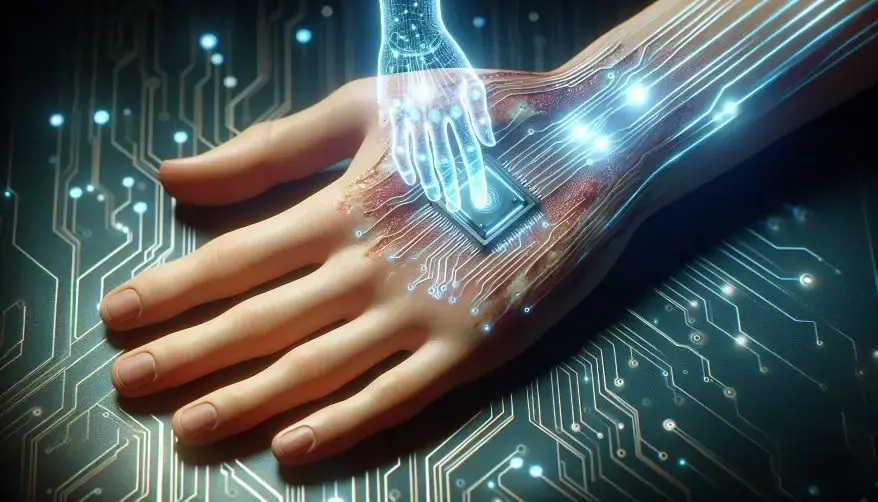Smart Bandages with AI: Revolutionizing Wound Healing
Every year, billions of people suffer from various types of wounds, ranging from small cuts to serious injuries. Proper care is essential because without timely treatment, wounds can lead to infections, scarring, or even life-threatening complications. Traditional wound treatments often follow standard procedures that don’t adjust to the changing needs of each patient. This one-size-fits-all approach can slow down healing and increase risks. Thanks to the revolutionary a-Heal platform. This cutting-edge technology is poised to transform the way we approach wound care, providing real-time, adaptive diagnostics and personalized therapy to accelerate the healing process.
Why Personalized Treatment Matters
The healing process is complex and changes over time — it goes through several stages like hemostasis, inflammation, proliferation, and maturation. Eventually, each stage requires specific care to ensure the best results. Therefore, wounds need adaptive treatment plans that respond to their current condition rather than relying solely on standard protocols.
The Innovation: a-Heal Wearable Device with AI
Recently, scientists developed an exciting new technology called the a-Heal platform. Thus, this wearable device acts like a smart bandage equipped with sensors and a camera that continuously monitors wounds in real-time. It doesn’t just observe—it actively treats wounds by delivering precise doses of medicine or electric stimulation as needed.
Behind the Technology: Machine Learning Physician
The magic happens because of a special software called the a-Heal ML Physician. This software uses advanced machine learning (ML) techniques to analyze wound images captured by the wearable device. Hence, it determines what healing stage the wound is in and decides the best treatment plan accordingly.
How Does it Work?
Every two hours, the device captures a photo of the wound and sends the image to its embedded AI system, affectionately called the AI physician.
This AI analyzes the wound’s healing stage by comparing it with an optimal healing timeline. If it detects that progress has slowed, it responds by delivering targeted treatment, either through medication or an electric field, directly to the affected area. The medication used is fluoxetine, which helps reduce inflammation and encourages tissue growth.
A Closed-Loop System for Personalized Care
The integration of camera, bioelectronics, and AI into one seamless system marks this as one of the first closed-loop solutions for wound healing. The device not only collects data but also acts on it immediately to optimize care throughout each stage of healing.
Smart Bandages: Real-Time Adjustments Using AI
The AI uses reinforcement learning, a method where it continually learns from new data by trial and error to improve treatment decisions. Thus, this means the device adapts drug doses and electric field strength in real-time to best support each patient’s unique healing process.
Science Behind Faster Healing with a-Heal
Treating Wounds with Bioelectronics and Medication
The smart bandage delivers fluoxetine locally using bioelectronic actuators while simultaneously applying an electric field that enhances cell movement for faster closure. These approaches have been shown in preclinical studies to speed up recovery time by about 25% compared to standard care.
Monitoring Progress from Afar
The wireless design allows secure transmission of images and healing data to doctors remotely. As a result, patients who live in remote areas or have limited mobility can receive expert wound care without frequent hospital visits.
The Future Impact on Chronic Wounds and Healthcare Access
Tackling Chronic and Infected Wounds
The research team is currently exploring how this technology can assist patients suffering from chronic wounds or infections, where healing often stalls for extended periods. By precisely adjusting therapy, a-Heal could revolutionize chronic wound management.
Reference
- Li, H., Yang, H., Lu, F., Hee, W. S., Asefifeyzabadi, N., Baniya, P., Gallegos, A., Schorger, K., Zhu, K., Recendez, C., Tebyani, M., Kesapragada, M., Keller, G., Kim, S., Luka, G., Zlobina, K., Nguyen, T., Figuerres, S., Franco, C., . . . Rolandi, M. (2025). Towards adaptive bioelectronic wound therapy with integrated real-time diagnostics and machine learning–driven closed-loop control. Npj Biomedical Innovations., 2(1). https://doi.org/10.1038/s44385-025-00038-6
Additionally, to stay updated with the latest developments in STEM research, visit ENTECH Online. Basically, this is our digital magazine for science, technology, engineering, and mathematics. Furthermore, at ENTECH Online, you’ll find a wealth of information.
Disclaimer: We do not intend this article/blog post to provide professional, technical, or medical advice. Therefore, please consult a healthcare professional before making any changes to your diet or lifestyle. In fact, we only use AI-generated images for illustration and decoration. Their accuracy, quality, and appropriateness can differ. So, users should avoid making decisions or assumptions based only on the text and images.






